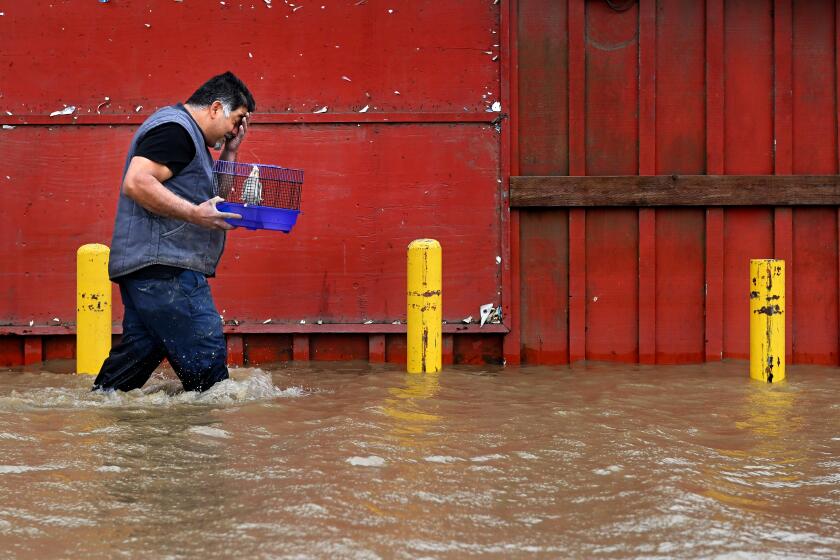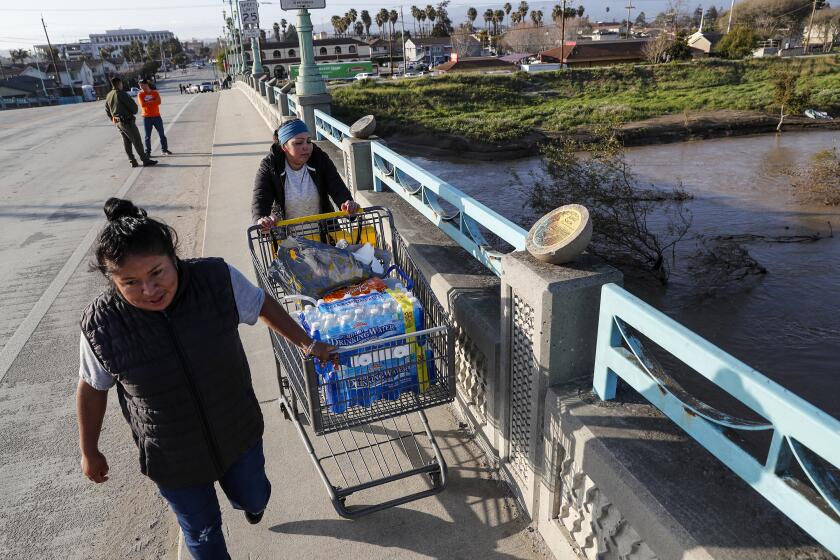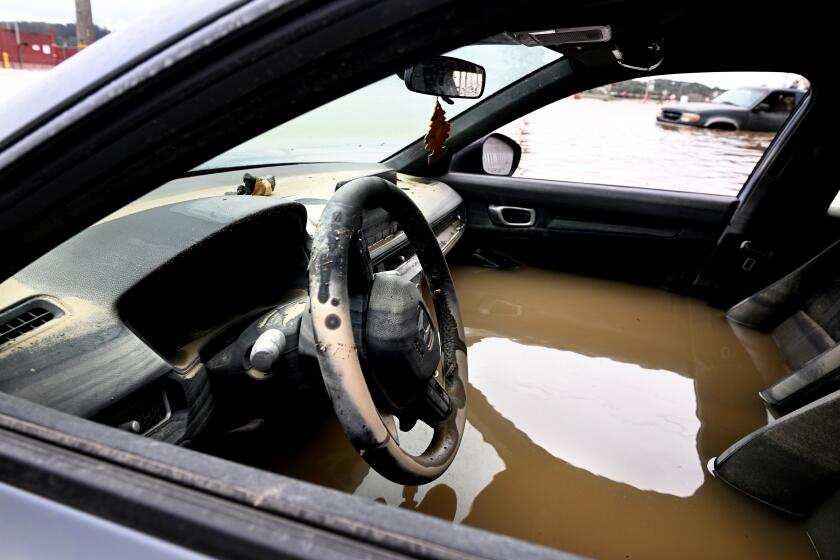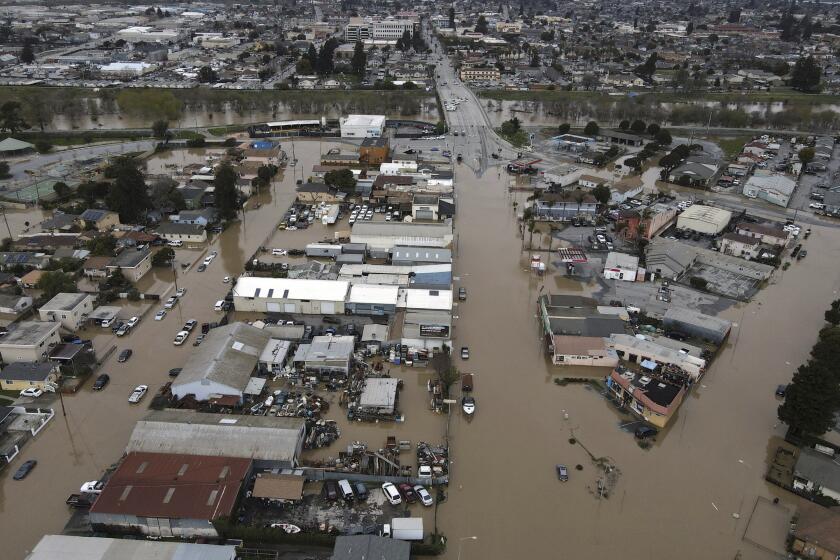In Pajaro, children and teens grapple with displacement after flooding
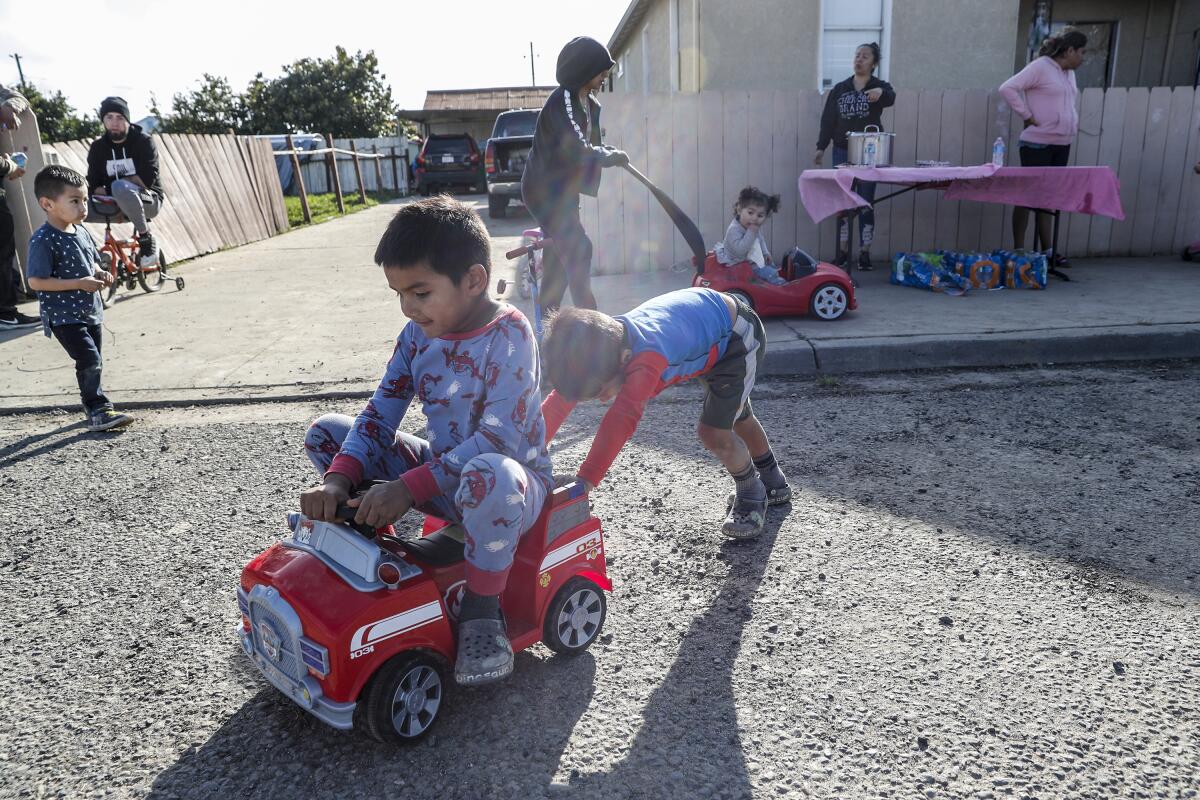
- Share via
WATSONVILLE, Calif. — The school buses arrived in quick succession, looping past the entrance of the Santa Cruz County Fairgrounds and a parking lot packed with cars before stopping near Harvest Building, a low-slung yellow structure usually used for fundraisers.
Araceli Telles stood waiting near the gate for her daughters to arrive at the sprawling complex. The family had recently landed in an emergency shelter here, less than a week after fleeing their home in Pajaro in the morning darkness when a levee broke and unleashed a flood.
Her daughters had been scared the first few days after the March 10 deluge, she said, unsure and unsettled by the abrupt displacement and constant moves. They spent one night in a hotel, another sleeping in a friend’s kitchen. But with buses at the shelter serving their schools, her children were, at last, back to a semi-normal routine.
Still, she worried about their health. Telles had received a call from her 7-year-old’s teacher saying Mitzy wasn’t her usual cheery self.
“Even though people say children don’t understand, they do,” Telles said in Spanish. “If I feel badly, my older daughter feels badly, even though things feel more calm. But now there are people saying it’s going to last a long time, maybe one or two months. And then we’re going to feel worse when we go back.”
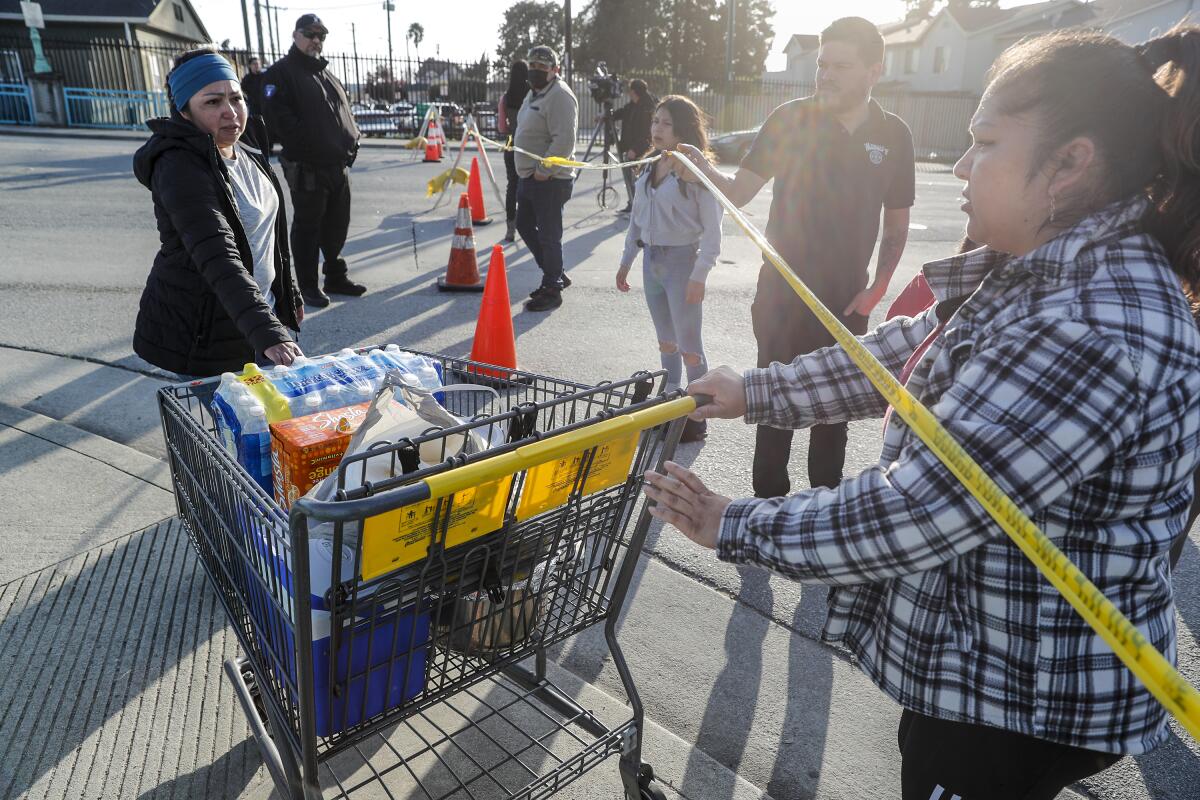
Families and children are still grappling with the sudden and devastating losses of their homes in Pajaro, a low-income farmworking community with a significant Indigenous population in unincorporated Monterey County. The Pajaro River separates the small community from the larger city of Watsonville in the Pajaro Valley. Displaced residents who have lost their homes also worry how they will pay their bills after many of the expansive agricultural fields surrounding the town also flooded.
The Pajaro Valley Unified School District, which serves students in Pajaro and Watsonville, saw a drop in attendance rates as students were displaced. While some have been living out of family cars or have moved out of the area to stay with relatives, several ended up at the Santa Cruz County Fairgrounds, where bus service began pickups and drop-offs after the district resumed classes March 15.
Nearly two weeks after a levee broke on the Pajaro River and flooded the nearby town, residents have received little in terms of federal help. They want to know why.
The district has added bus stops to try to accommodate requests from families and get students back to the classroom, Pajaro Valley Unified Supt. Michelle Rodriguez said, but it hasn’t been easy.
“They really scattered, and now they’re trying to come back,” Rodriguez said. “Little by little, we’ll get the ones that are not here currently and we’ll let them know we’re ready for them.”
At least 1,600 children and teens had attended three schools that served the Pajaro Valley Unified area and were directly affected by road closures and flooding. But the number of students deeply affected by the disaster is likely higher because many students who live in Pajaro cross the bridge to attend school in Santa Cruz County.
After Pajaro was evacuated, teachers spent days calling their students to make sure they were safe and find out where they had ended up. But they remain worried about those who haven’t answered their calls. And they wonder how many will return to school.
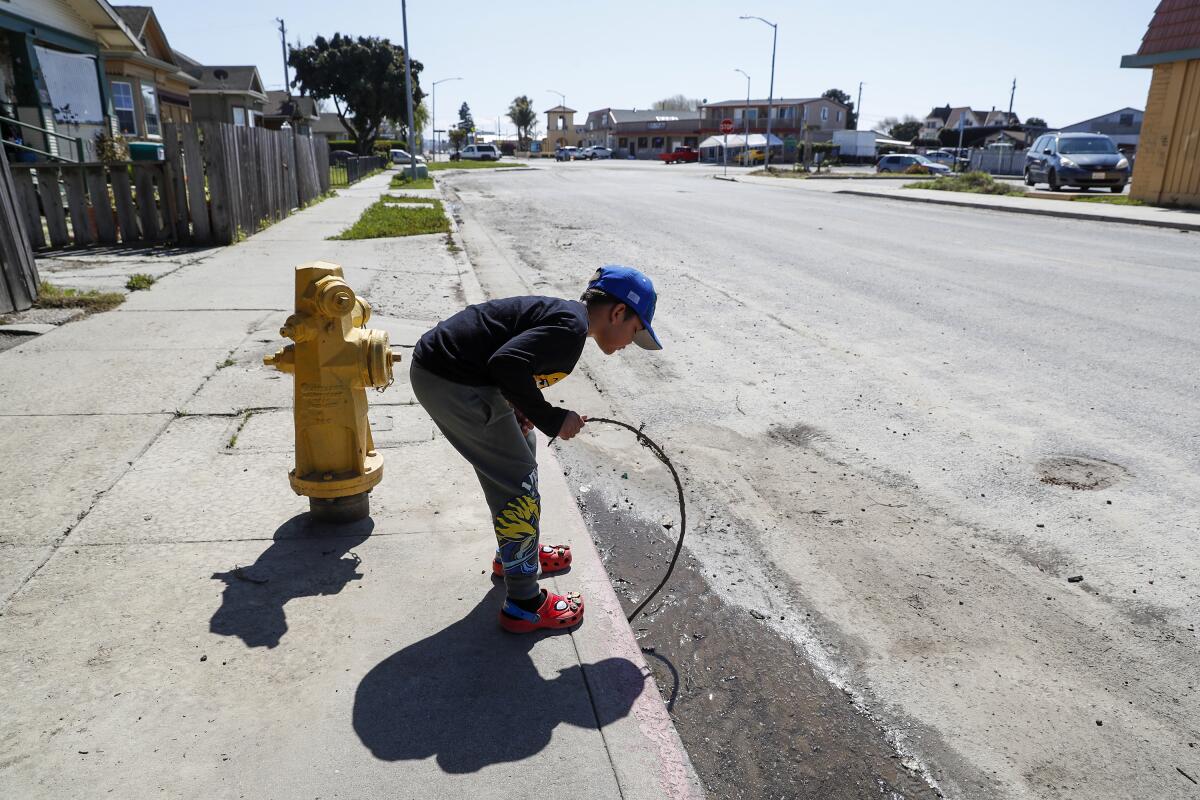
Mitzy, Telles’ younger daughter, got off the bus and handed her backpack to her mother, a form of elementary school greeting.
She peeled and munched on an orange while her sister Joselyn sat on a bench in the shade. When a volunteer began handing out black baseball caps to evacuees, Mitzy jumped at the chance to accept one and patiently waited while her sister adjusted the strap to fit her petite head.
But her smile fell when Joselyn, 14, mentioned that Mitzy’s teacher had reported that the first-grader seemed sad.
“I miss my room, my TV and my guitar and my little house,” Mitzy said.
Joselyn nodded in agreement. At home, they shared a room with their parents, while relatives slept in the other bedroom. But that felt spacious compared to the shelter, where they slept on cots in an auditorium with dozens of strangers.
Joselyn said she was having a hard time adjusting. So far, no one at school except one friend knew her family had been displaced. She had left behind important notebooks for her geometry class when they evacuated on March 11. She hoped her teacher would give her an extension to turn in her work.
“I don’t feel comfortable being around so many people,” Joselyn said of the shelter. “I can’t concentrate. At school, they already told me that my grades are falling.”
Before, Joselyn said, she used to walk to school from her house. But now she had to wake up earlier than usual to catch the bus, joining the line of other students waiting for a turn to use restrooms in a portable trailer so they could get ready for classes.
She used to put on makeup and straighten her curly hair for school, but those tools and products remained back at home. She hadn’t even managed to put on shoes when they left. She lucked out when her mother had a pair of Nikes that were her size.
But she was glad it was finally Friday. She had just one hoodie, and she’d already worn it two days in a row. At least now, she said, her mom could wash it over the weekend.
::
When the phone calls came in after the flood emptied Pajaro, Mindy Dumont, a fourth-grade teacher at Ohlone Elementary School, heard a consistent plea from her students: Could she help them come back to school?
“There’s a lot of families that are in their cars, they’re homeless and they’re being turned away from the Santa Cruz County fairgrounds,” Dumont said, her voice breaking with tears. “I’m hearing stories of kids who have not yet come to school because they don’t have a change of clothes and they’re not at the shelter and they don’t have a place to shower ... or they don’t have shoes at all.”
Founded as a labor camp for agricultural workers, the small community of Pajaro has long languished in the shadow of nearby Watsonville.
Some of her students have requested rides to campus. Teachers have students in need of backpacks and clean socks and underwear. Many are showing up wearing the same outfit every day.
Dumont estimated that 65% of her class was displaced by the flood. Of the students who have shown up, some appear relieved to be back with their friends while others look exhausted and sleepy.
“We spent months making our classroom our family,” Dumont said. “And it’s just — I don’t know what the future holds. I don’t know if I’m going to see some of my students again. We were just basically broken up.”
::
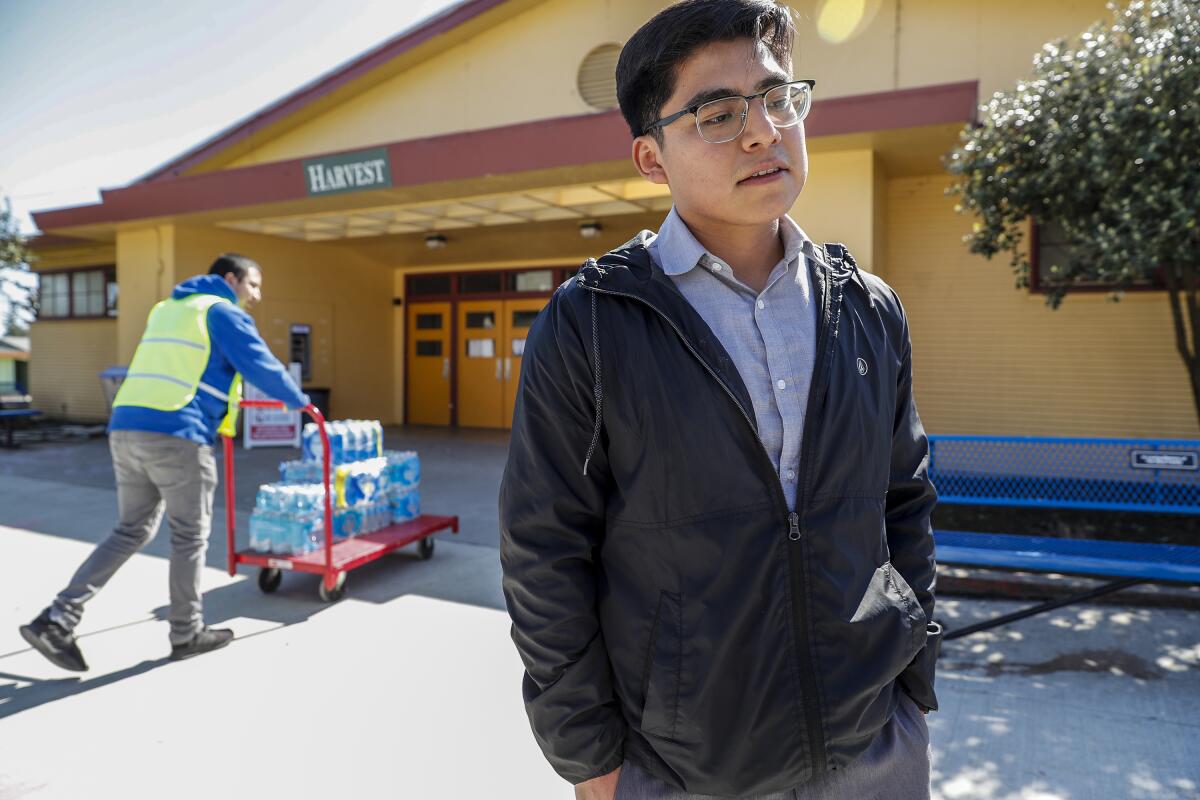
Maria Contreras and her three children, including two who attend Watsonville High School, decided not to leave when Pajaro was evacuated. They had nowhere to go, she said, and they felt a sense of security being on the second and third floor of their apartment complex.
Very few families had opted to stay. The town was mostly quiet as city and county trucks rumbled around and CalFire officials checked on flooded houses. The water had largely receded but some streets and cars remained covered in debris.
Contreras’ two high schoolers are completing assignments remotely because they’re unable to leave Pajaro to attend school across the bridge. They want to return to school, she said, but if they got trapped on the other side in Watsonville, she doesn’t know where they would stay.
“That’s why we said there’s no way they can go to school. We’re hopeful this doesn’t last long,” Contreras said.
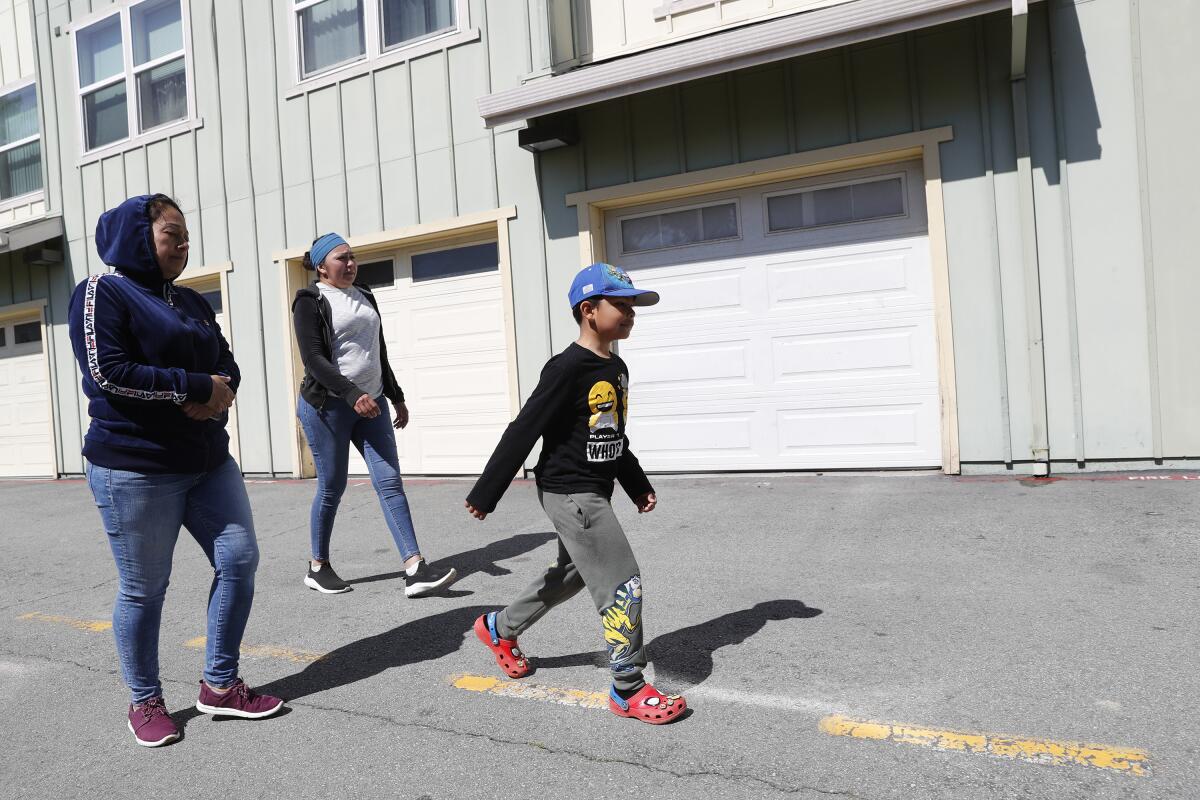
She had joined her friend Maria Terriquez and Terriquez’s 6-year-old son Darey on a walk around the ghost town. Darey still hasn’t returned to school. His mother worries that if he left the area, he wouldn’t be allowed back in.
County officials lifted evacuation orders in Pajaro on Thursday morning, allowing residents to travel over the bridge and assess damage.
In Pajaro, some students may not return during the current school year.
Ruth Ruiz, 32, has spent multiple afternoons on the Watsonville side of the bridge with her daughter, Leilani, 6. They are eager to get back to Pajaro. Her family is currently couch-surfing and has not stayed in the same place for more than one night.
California’s historic storms have hit communities of color like Pajaro especially hard. It’s a recurring problem that could’ve been avoided.
Leilani played with a rainbow-colored popper toy while a frustrated Ruiz sought answers from county officials about when they would be allowed back into their homes. They stood together, pressed against yellow caution tape that barred them from crossing the bridge as a crowd of Pajaro residents assailed county officials with questions and criticized their lack of answers.
Leilani said she felt sad. Ruiz said she has tried to shield the little girl from the damage and has enrolled her in independent study until she can resume dropping her off at Ohlone Elementary every day.
“I try to keep it on the low to certain extents of what she can find out,” Ruiz said. “But, I mean, obviously she overhears things.”
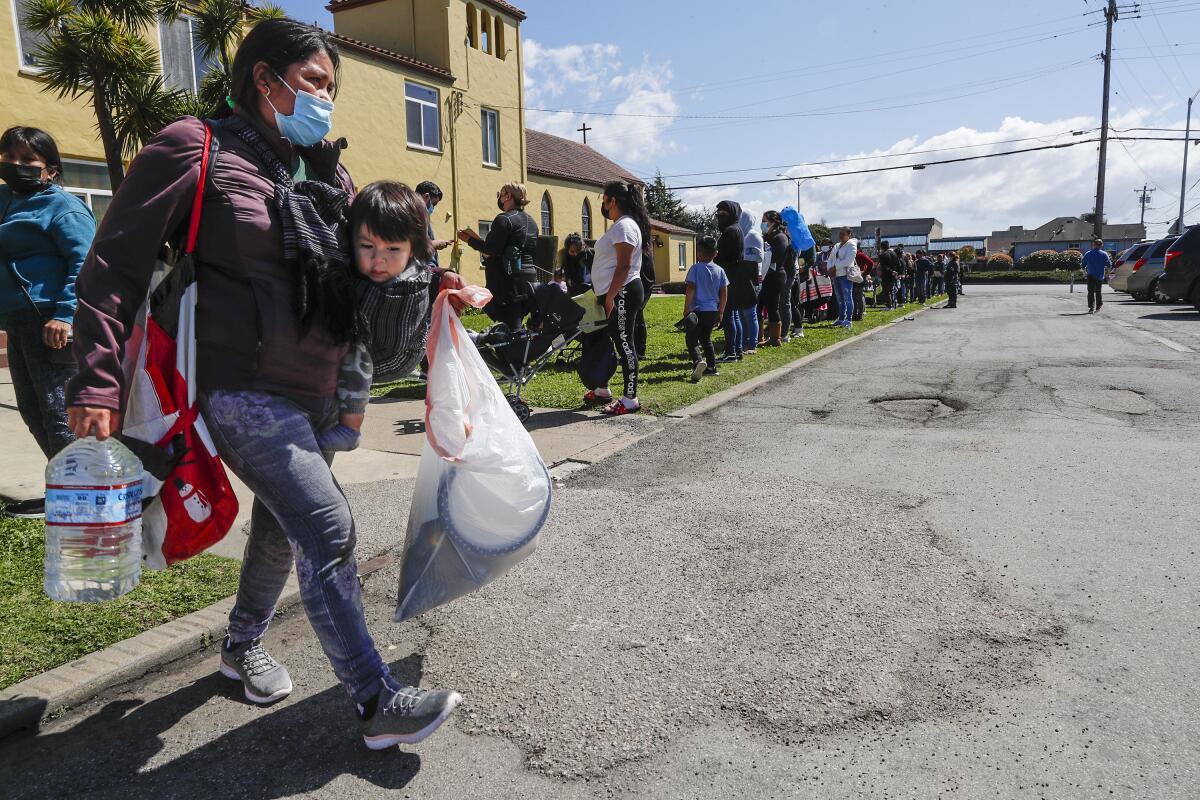
::
Some families have found a sense of routine now that their children have returned to school. At the fairgrounds shelter, the kids huddle together after the 3 p.m. bus drop-offs. The younger children meet up with their parents, while teens lounge around outside the fairground buildings.
Rebeca Ortiz, 31, picked up her children, 7 and 10, from the bus. They had evacuated five days earlier, when officials rolled through Pajaro. She managed to grab important papers and a spare change of clothes.
Her sons have asked when they will go back home. It is a question without an answer.
“We lost everything,” Ortiz said.
Images from space show the hard-hit California towns of Pajaro and Porterville before and after flooding caused by recent storms.
She worked in the fields picking strawberries, but the floods came as the season was about to start. When her children are not at school, she tries to keep them busy with homework, games and Legos from the shelter. Sometimes they play indoor soccer with the other kids.
But they are sad, she said. They miss playing on the patio at home and riding their bicycles with friends. Their sleep schedules have been disrupted by the noise in the shelter, which often doesn’t quiet down until 11 p.m. Her sons used to be asleep by 9 p.m.
Still, she said, Santiago, her 7-year-old, has tried to remain upbeat.
“He’s happy because nothing happened to us,” Ortiz said. “He said, ‘Our things are not important … as long as we’re OK, that’s what’s important.’”
More to Read
Sign up for Essential California
The most important California stories and recommendations in your inbox every morning.
You may occasionally receive promotional content from the Los Angeles Times.
